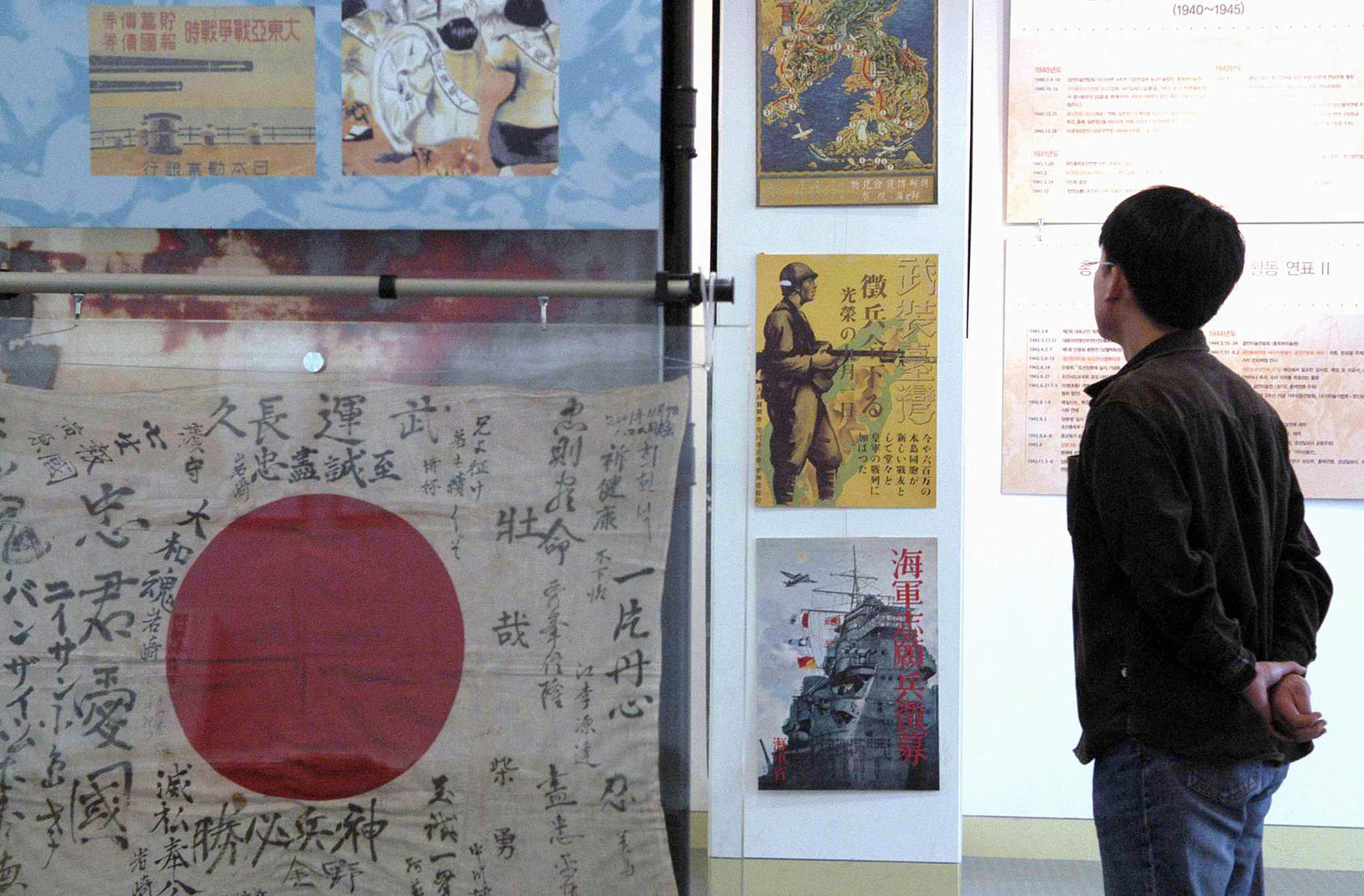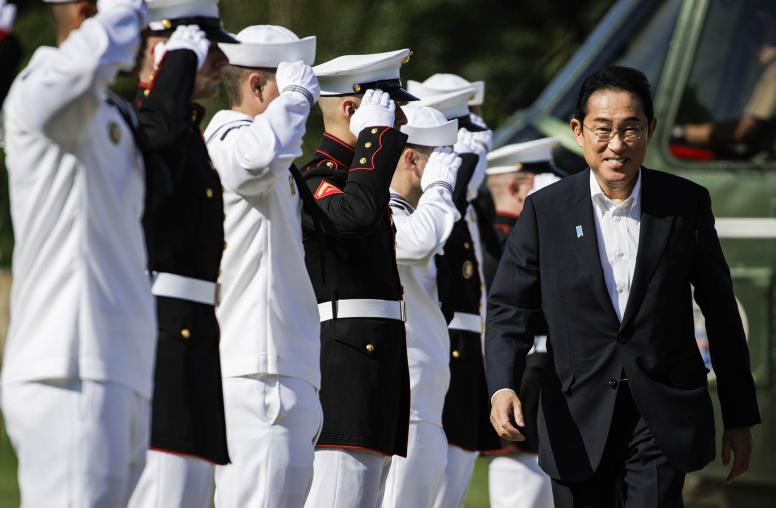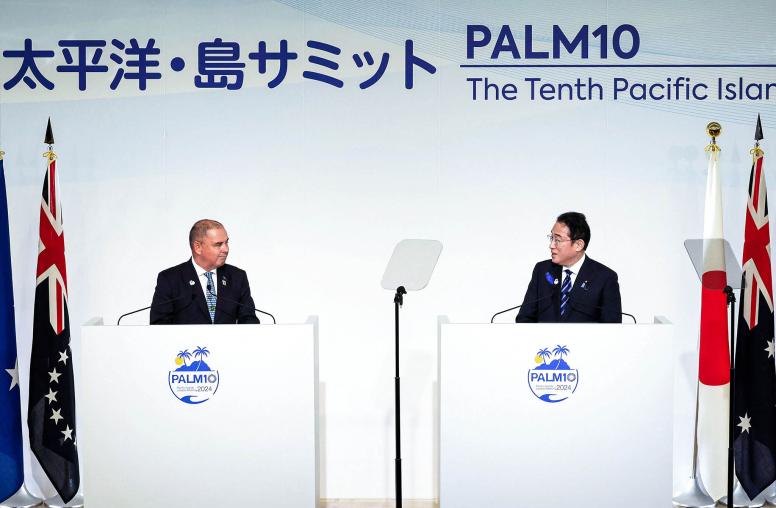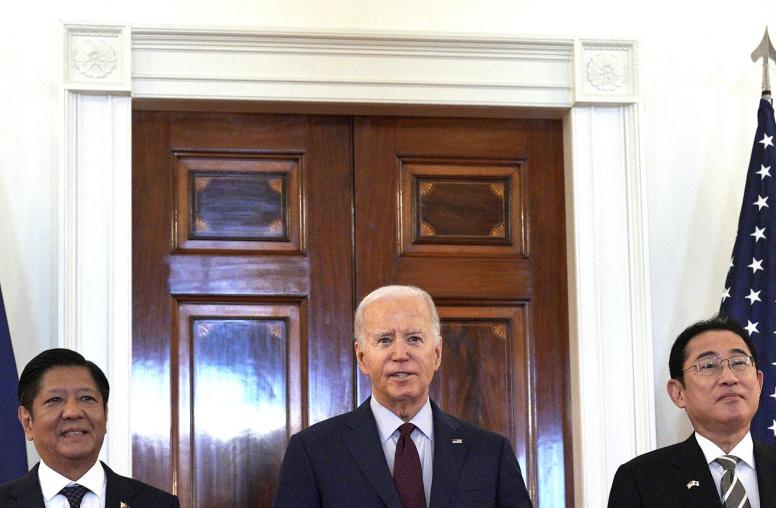Acknowledging U.S. Missteps Can Ease Japan-South Korea Relations
Since 1945, U.S. security interests have limited opportunities for reconciliation between the Northeast Asian neighbors.
History sits at the heart of the frigid relationship between South Korea and Japan. Not just the history of Japanese imperialism, but also the history of U.S. strategic interests since 1945. U.S. decision-making stemming from such interests — at first framed within the context of fighting the Cold War and now defined by U.S. competition with China — has oftentimes exacerbated long-term South Korea-Japan relations in its pursuit of expedient solutions and limited the opportunities and avenues for reconciliation.

If the United States hopes to facilitate genuine and sustained rapprochement between South Korea and Japan, and thus cultivate the foundation for a more peaceful, stable and harmonious Indo-Pacific region, it must understand and acknowledge its own role in perpetuating those divisions.
An Exclusive Peace Treaty
In the crucial period after World War II, the U.S. decision to exclude Korea from the peace treaty with Japan discounted Korean grievances against Japan and instead established a framework by which U.S. strategic interests would take precedence over resolving bad history.
When World War II ended, the dual U.S. military occupations of southern Korea and Japan added urgency to longstanding discussions in Washington about what the future of East Asia would look like in a postwar era. U.S. officials were initially motivated by idealistic goals of promoting a liberal peace, including allowing for reparations that could recognize those who had suffered because of Japanese actions, and began drafting versions of an eventual peace treaty with Japan that could accomplish such broad tasks.
The plan was as follows: A peace treaty would fully restore Japanese sovereignty, end the Allied occupation of Japan and fulfill the spirit of Allied wartime aspirations of achieving peace based upon justice. Ideally, the treaty would do so without eviscerating Japan’s postwar recovery, avoiding the mistakes of the punitive Treaty of Versailles after World War I. The treaty would also signal Japan’s transformation — after careful U.S. stewardship — from imperialist belligerent to a democratic member of the global community of nations.
But as tensions surged with the Soviet Union and fears of communism ratcheted up to new heights in the years after the end of World War II, the chief imperative for U.S. foreign policy mutated. The treaty’s central value became restoring Japan as a strategic asset in the Pacific and a sovereign ally, with the secondary benefit of addressing how Japan could settle its imperial past. The treaty would function as legal validation of the effort of rehabilitating and leveraging Japan as the key link in the U.S. regional security network.
Addressing Japan’s Imperialist Past
Dealing with Japan’s past was no easy task. The issues ranged from territorial disputes from the Kuril Islands to the South China Sea, to compensation for citizens of the Allies who may have suffered while living under Japanese rule, to the very question of who — in a world that looked very different from the one before the war — qualified as an “Allied combatant” and thus deserved reparations from Japan.
A shifting team of U.S. diplomats and staffers grappled with these questions for years while countries that stood to gain or lose from the peace treaty lobbied Washington. The treaty — which would eventually be signed in San Francisco in September 1951 — was thus a multilateral document that had to deal with the question of who could be a party to it.
The key question was whether newly independent states that had been colonies during World War II could be recognized for their wartime grievances. U.S. officials had approved the inclusion of former Western colonies like the Philippines, Vietnam and Indonesia in the San Francisco Peace Treaty, seeing their participation as valuable in boosting the legitimacy of the treaty. Normalizing relations between newly independent states and Japan was crucial for regional stability, especially when nations like India were refusing to attend, so it was important to get as many Asian states as possible to sign on to the treaty.
South Korea similarly claimed that it deserved to be represented in the treaty, pointing to the history of Korean resistance to Japanese colonial rule. In particular, the Syngman Rhee government sought reparations from Japan, recognition that the Takeshima/Dokdo islands would be under South Korean jurisdiction and, most importantly, participation in the international treaty that would formalize Japan’s acknowledgment of its imperial conduct. It is important to note that the South Korean government did not demand redress for Korean comfort women forced into sexual slavery, then still a taboo subject in Korean society, and instead saw reparations as a way to fuel Korea’s postwar recovery.
U.S. Priorities
Complications quickly materialized. The United States prioritized rebuilding Japan as a strategic asset and was anxious to minimize Japan’s economic burdens from treaty-bound reparations. Also, until the Korean War, the U.S. government generally saw the Korean peninsula as less important. During World War II, the United States had explicitly dismissed petitions by the Korean Provisional Government and other Korean organizations to be involved in early United Nations conferences.
Illustrating U.S. priorities, the U.S. Army occupation of southern Korea was characterized by an absence of any Americans on the ground with knowledge or sympathy for their local context; the head of the U.S. occupation often complained that Koreans were “poorly trained, and poorly educated Orientals … with whom it is almost impossible to reason.”
Before June 1950, U.S. officials in the region at times felt frustrated with South Korean lobbying and saw Korean representatives as troublesome and obnoxiously nationalistic, compared to the Japanese who they saw as relatively cooperative.
And while an early State Department draft of a peace treaty did include Korea as a participant, archival documents reveal that the United States justified the South Korean government’s involvement because it otherwise “would doubtless feel entitled to participate and would be resentful if the U.S. did not favor its participation.” In other words, including South Korea was motivated by the desire to avoid the headache of an outcry from Seoul, not necessarily by virtue of its claims.
U.S. officials especially struggled with how to evaluate the longer history of Japanese imperialism in Korea. Records in the U.S. National Archives also reveal a 1949 report from the State Department that concludes that “the interests of Korea in the peace settlement appear to arise more from the consequences of annexation and forty years of exploitation than from the war itself,” and went on to criticize Korean claims for going beyond the “WWII” framing that the United States was comfortable with.
The Logic of Quick Solutions
The start of the Korean War in June 1950 set off two countervailing factors regarding South Korea’s participation in the San Francisco Treaty. Firstly, it dramatically raised South Korea’s strategic profile and convinced some U.S. officials of the symbolic benefits of getting South Korean representatives on an international stage. Drafts of the peace treaty in late 1950 and early 1951 included South Korea as a participant, recognizing Korea’s grievances against Japan.
But secondly, the war amplified U.S. anxieties about finalizing the treaty promptly. Japan was still the major strategic asset for the United States. The peace treaty would be coupled with a mutual security agreement with Japan, amid intensified U.S. pressure on Japan to rearm its Self-Defense Forces, reinstate previously purged Imperial Japanese officers to staff that military and partially reverse early efforts to root out wartime Japanese leaders from public life. The revisionist wing of Japan’s ruling Liberal Democratic Party, which is unapologetic for Japan’s imperial past, can trace its foundations to U.S. decisions to backpedal its ambitions of demilitarization and democratization. Geopolitics, not addressing difficult history, shifted the calculus and had enduring consequences.
This logic of quick solutions to maximize U.S. advantages in the short term ultimately led to South Korea’s exclusion from the San Francisco Peace Treaty. When British diplomats raised concerns that including South Korea, but excluding North Korea, could upset the United Kingdom’s own commercial interests with China, the United States quickly agreed. Moreover, the State Department was primed to nix Korean involvement. Japan had already lobbied aggressively against Korean involvement, with Prime Minister Shigeru Yoshida most concerned about the claims that Korean nationals living in Japan could be entitled to.
John Foster Dulles, a future U.S. secretary of state and then-chief diplomat for treaty negotiations, saw Korean officials as overly nationalistic troublemakers who could disturb the carefully planned treaty process.
Over the summer of 1951, the Korean ambassador to the United States hunted for avenues for South Korea to remain a party to the treaty but was repeatedly rebuffed. Archival evidence shows that the final U.S. offer was only that a few South Korean officials could attend the conference as informal guests, and the State Department would help with booking their hotels.
At this point, U.S. hopes were that, ultimately, South Korea and Japan could sort out their problems bilaterally. In the window of opportunity when the United States could exert dramatic influence over the future of relations in Asia, the suffering that Koreans may have experienced under Japanese control was not recognized. Without strong U.S. mediation, it would take nearly 15 years for South Korea and Japan to eventually normalize relations in 1965, allowing historical issues and enmities to fester.
Long-Term Consequences
U.S. decisions in 1951 were not illogical from a certain point of view at the time, but the rationale under which the United States excluded South Korea from the peace treaty had long-term consequences and illuminates the framework of U.S. strategic decision-making that persists today.
For more than 70 years, the Northeast Asia policy of successive U.S. administrations has seen the historical problems causing South Korean-Japanese enmity to be a “them” problem, which has ballooned in spite of U.S. efforts to encourage reconciliation.
On the contrary, the United States has oftentimes contributed to those festering issues by using its strategic imperatives to pummel South Korean and Japanese governments into following its lead. Resets of relations, like the 1965 normalization treaty and the 2015 comfort women agreement, although sometimes publicly framed by the United States as attempting to settle historical enmities, had also been pushed forward in the spirit of shoring up U.S. strategic interests. These resets have subsequently proven to be brittle despite achieving short-to-medium-term breakthroughs — the former because of the utter absence of public participation and the latter because it failed to consult with individual victims and left the impression that it was a political deal rather than a reconciliatory agreement.
Any South Korea-Japan rapprochement would need to be more than an agreement between governments without a popular discourse, even though those are the kind of agreements that are expedient in the short term.
Owning Up to the Past
The United States can help lessen political costs for South Korean and Japanese leaders by acknowledging its own historical role in prioritizing security interests at the expense of Korean grievances and victims’ rights.
Official U.S. recognition that the current state of South Korea-Japan relations is due in part to the nature of the U.S. strategic framework can perhaps redirect some of the blame volleyed between Tokyo and Seoul. In addition, with U.S. participation, a holistic exploration of postwar history can also highlight the South Korean government’s own failure to address the claims of individual Korean victims in the negotiations of 1951 and 1965.
A series of semiofficial conferences that include Korean, Japanese and U.S. scholars and examine the legacy of postwar settlements could also be of value in producing joint policy-oriented publications. This could help policymakers start with a common groundwork of facts for any conversations around reconciliation. While some in the United States may chafe at the prospect of any sort of “apology” for previous U.S. actions, the legacy of diplomatic decision-making in post-World War II Asia may not necessarily be a charged topic within the United States that causes domestic backlash to the U.S. government. And such an approach is far more likely to lead to a durable public reconciliation than merely hoping that China and North Korea could be a common external threat that brings South Korea and Japan together.
The legacy of U.S. strategic decisions at the creation of its global security architecture left indelible marks on Northeast Asian relations. But Japan and South Korea do not have to be destined for perpetual tension because of their unresolved history. Uncovering and acknowledging previous U.S. decisions can be an important first step that asserts Japanese culpability for its wrongdoings in World War II while removing the accusation that it is only Japanese intransigence, Korean nationalism or some combination of the two that led to the present state of affairs. Rather, U.S. security interests have necessarily contributed to limitations in the opportunities and means of historical reconciliation since 1945.
Syrus Jin is a doctoral candidate in history at the University of Chicago, where he researches the U.S. military, East Asia and the post-war creation of the U.S. global security architecture.



